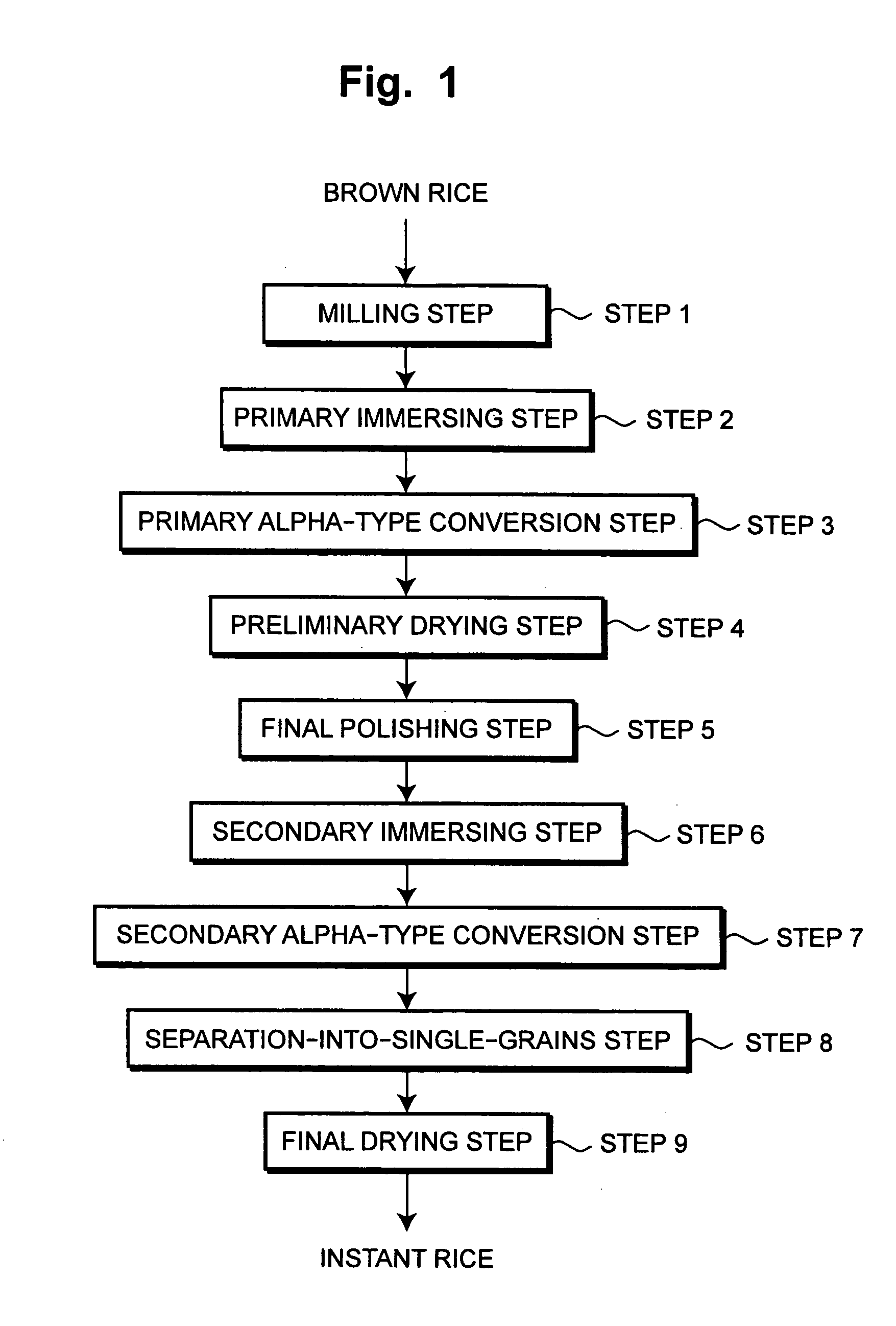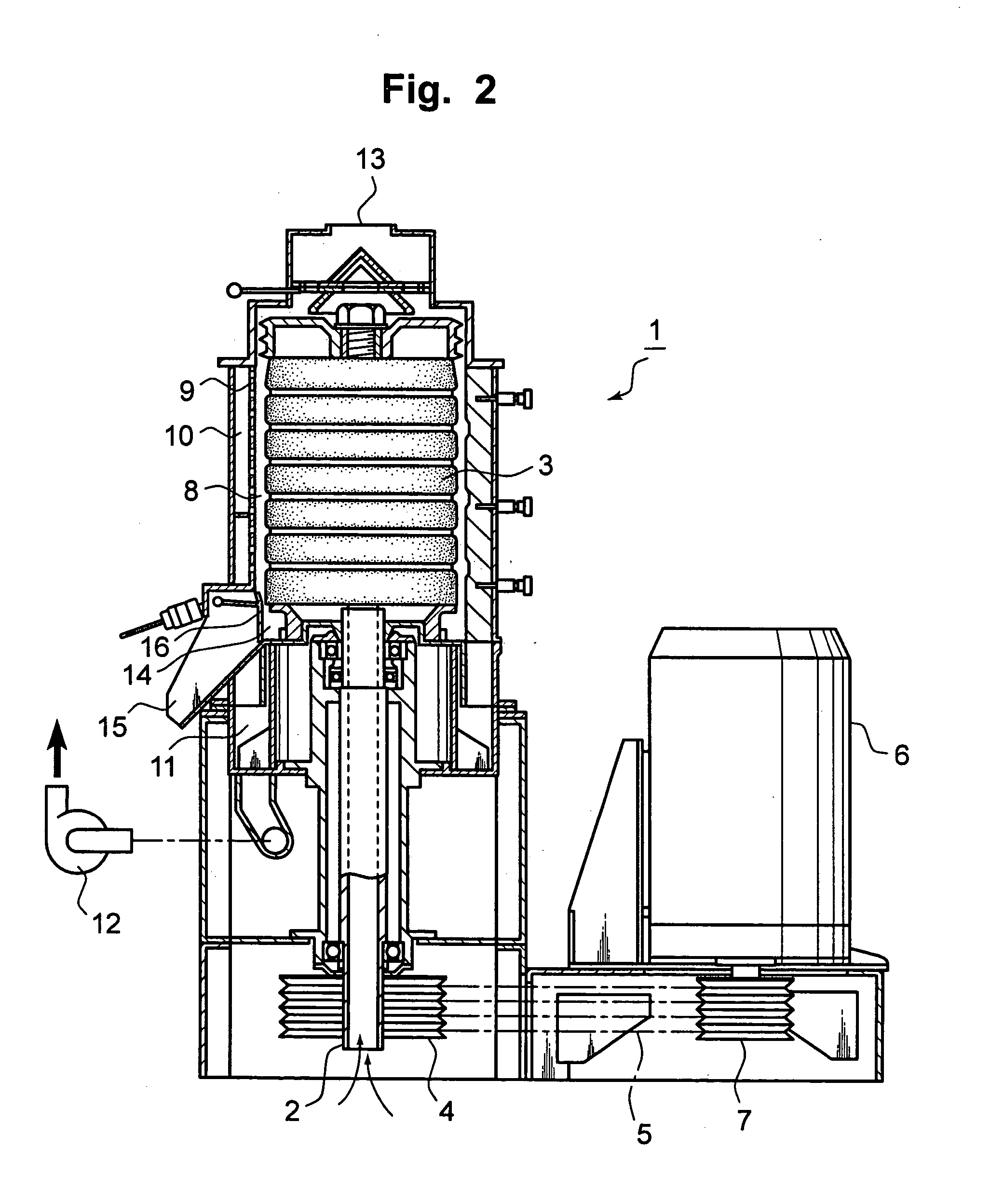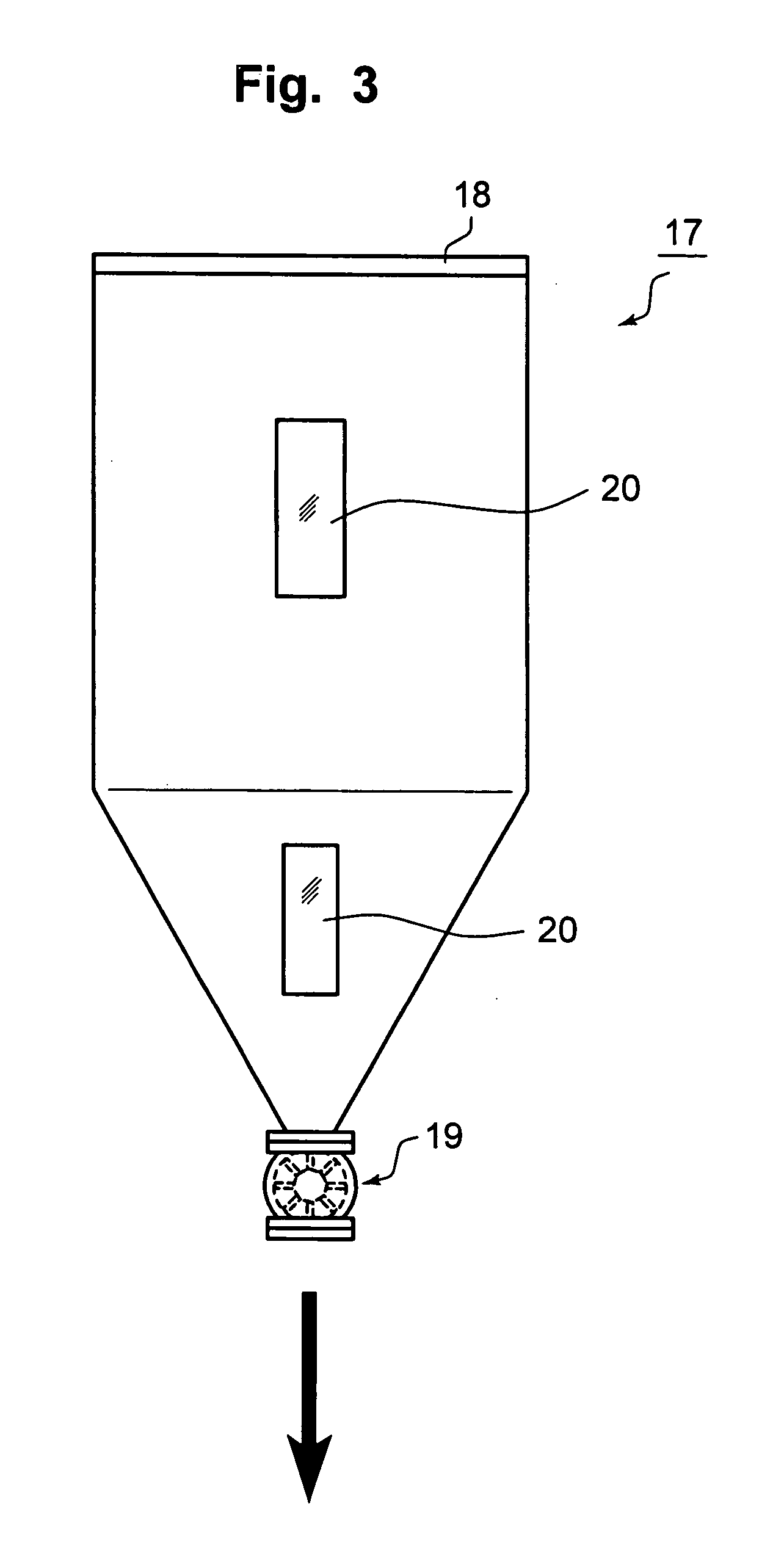Process for preparing instant rice and product thereof
a technology of instant rice and product, which is applied in the field of instant rice preparation and product thereof, can solve the problems of cracking of rice grains of those surfaces, short cooking time required for instant rice, and less rigid surface layers of rice grains
- Summary
- Abstract
- Description
- Claims
- Application Information
AI Technical Summary
Benefits of technology
Problems solved by technology
Method used
Image
Examples
Embodiment Construction
[0033] Now, a preferred embodiment for carrying out the present invention will be explained in the following. FIG. 1 shows a flow for explaining the steps for preparing the instant rice containing polished rice according to the present invention. The flow of steps in FIG. 1 comprises a milling step (Step 1), a primary immersing step (Step 2), a primary alpha-type conversion step (Step 3), a preliminary drying step (Step 4), a final polishing step (Step 5), a secondary immersing step (Step 6), a secondary alpha-type conversion step (Step 7), a separation-into-single-g-rains step (Step 8) and a final drying step (Step 9).
[0034] In the following, the constitutions of apparatus embodiments to be used in each of the aforesaid steps will be explained.
[0035] In the milling step (Step 1), a vertical-type abrasive roll rice polishing machine 1 (Model type: VTA) manufactured by Satake Corporation as shown in FIG. 2 may be preferably used, for example. The vertical-type abrasive roll rice poli...
PUM
 Login to View More
Login to View More Abstract
Description
Claims
Application Information
 Login to View More
Login to View More - R&D
- Intellectual Property
- Life Sciences
- Materials
- Tech Scout
- Unparalleled Data Quality
- Higher Quality Content
- 60% Fewer Hallucinations
Browse by: Latest US Patents, China's latest patents, Technical Efficacy Thesaurus, Application Domain, Technology Topic, Popular Technical Reports.
© 2025 PatSnap. All rights reserved.Legal|Privacy policy|Modern Slavery Act Transparency Statement|Sitemap|About US| Contact US: help@patsnap.com



